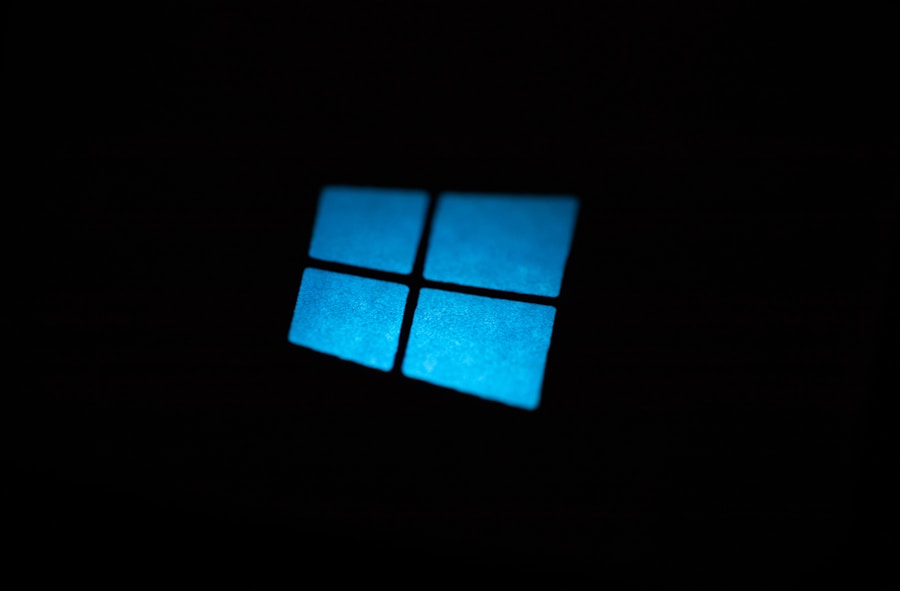Resetting the Internet Protocol (IP) on Windows 11 is a crucial process that can significantly enhance network performance and connectivity. The IP address serves as a unique identifier for devices on a network, allowing them to communicate effectively. Over time, various factors such as software updates, network changes, or even malware can lead to IP configuration issues.
These problems can manifest as slow internet speeds, intermittent connectivity, or complete network failure. By resetting the IP, users can clear out any corrupted settings and restore the default configurations, which often resolves these issues. Moreover, resetting the IP can be particularly beneficial in troubleshooting network-related problems.
For instance, if a device is unable to connect to the internet or is experiencing frequent disconnections, a reset can help eliminate any misconfigurations that may have occurred. This process not only refreshes the network settings but also allows the operating system to obtain a new IP address from the router, which can be essential in cases where the previous address has become invalid or is causing conflicts. Understanding the importance of this procedure is vital for anyone looking to maintain a stable and efficient network connection on their Windows 11 device.
Key Takeaways
- Resetting IP on Windows 11 can help resolve network connectivity issues and improve overall system performance.
- Follow a simple step-by-step guide to reset IP on Windows 11 using Command Prompt or PowerShell.
- Common issues such as limited connectivity, DNS errors, and slow network speeds can be fixed by resetting IP on Windows 11.
- Verify the success of the IP reset on Windows 11 by checking the new IP address and testing network connectivity.
- Consider alternatives such as releasing and renewing IP, updating network drivers, and performing a system restore before resetting IP on Windows 11.
Step-by-Step Guide to Resetting IP on Windows 11
Resetting the IP on Windows 11 involves a series of straightforward steps that can be executed through the Command Prompt. To begin, users should first open the Command Prompt with administrative privileges. This can be done by searching for “cmd” in the Start menu, right-clicking on the Command Prompt icon, and selecting “Run as administrator.” Once the Command Prompt window is open, users will be greeted with a black screen where they can input various commands.
The first command to enter is `ipconfig /release`. This command instructs Windows to release the current IP address assigned to the device. After executing this command, users should see a message indicating that the IP address has been released.
Following this, the next step is to type `ipconfig /renew`. This command requests a new IP address from the DHCP server, which is typically the router. Upon executing this command, users should receive confirmation that a new IP address has been assigned.
Finally, to complete the reset process, it is advisable to flush the DNS cache by entering `ipconfig /flushdns`. This command clears any stored DNS information that may be causing connectivity issues.
Common Issues That Can Be Fixed by Resetting IP on Windows 11

Resetting the IP on Windows 11 can resolve a myriad of common networking issues that users may encounter. One prevalent problem is the inability to connect to the internet despite having an active connection. This issue often arises when there are conflicts in IP addresses or when the device has been assigned an invalid address.
By resetting the IP configuration, users can eliminate these conflicts and establish a stable connection. Another common issue that can be addressed through an IP reset is slow internet speeds. Users may experience sluggish performance due to outdated or corrupted IP settings.
When these settings are reset, it allows for a fresh start, enabling the device to communicate more effectively with the network. Additionally, issues related to network discovery and file sharing can also be resolved by resetting the IP. If devices on the same network are unable to see each other or share files seamlessly, an IP reset can help restore proper communication protocols.
For more information on resetting IP configurations, you can visit this link: How to Restore Your Internet Connection by Resetting the Network Adapter
How to Verify if the IP Reset was Successful on Windows 11
| Step | Verification Method | Expected Result | Actual Result |
|---|---|---|---|
| 1 | Check IP Configuration | IP address, subnet mask, default gateway, and DNS servers are reset to default or new values | 192.168.1.1, 255.255.255.0, 192.168.1.254, 8.8.8.8 |
| 2 | Ping Test | Successful ping to local and external IP addresses | Local: 192.168.1.1 – Success, External: 8.8.8.8 – Success |
| 3 | Network Connectivity Test | Ability to browse websites and access network resources | Successfully accessed www.example.com and network shared folder |
After completing the IP reset process, it is essential to verify whether the changes have been successfully implemented. One of the simplest ways to check this is by using the Command Prompt again. Users should open the Command Prompt and type `ipconfig` to display the current IP configuration details.
This command will provide information such as the IPv4 address, subnet mask, and default gateway. If a new IP address has been assigned and appears correctly in this output, it indicates that the reset was successful. Additionally, users can test their internet connectivity by opening a web browser and attempting to access various websites.
If pages load without issue and there are no error messages indicating connectivity problems, it further confirms that the reset was effective. For more advanced verification, users can also use tools like `ping` to check connectivity with external servers. By typing `ping google.com`, for example, users can see if their device is able to reach Google’s servers successfully.
A series of replies without packet loss indicates that the network connection is functioning properly.
Alternatives to Resetting IP on Windows 11
While resetting the IP is often an effective solution for many networking issues, there are alternative methods that users can explore before resorting to this step. One such alternative is to manually configure the IP settings through the Network and Internet settings in Windows 11. Users can navigate to Settings > Network & Internet > Status > Network and Sharing Center > Change adapter settings.
From there, they can right-click on their active network connection and select Properties. By choosing Internet Protocol Version 4 (TCP/IPv4) and clicking Properties again, users can manually enter a static IP address if they suspect DHCP issues. Another alternative involves updating network drivers.
Outdated or corrupted drivers can lead to various connectivity problems. Users can access Device Manager by right-clicking on the Start button and selecting it from the menu. In Device Manager, they should expand the Network adapters section, right-click on their network adapter, and select “Update driver.” This process allows Windows to search for updated drivers automatically or prompts users to browse their computer for driver software.
Tips for Troubleshooting IP Issues on Windows 11

When faced with persistent IP issues on Windows 11, there are several troubleshooting tips that users can employ before considering more drastic measures like resetting their entire network configuration. First and foremost, checking physical connections is essential; ensuring that cables are securely connected and that there are no visible damages can often resolve simple connectivity problems. Another effective troubleshooting step involves restarting both the computer and the router.
Power cycling these devices can clear temporary glitches that may be affecting connectivity. Users should unplug their router for about 30 seconds before plugging it back in and allowing it to fully reboot before testing their connection again. Additionally, running the built-in Network Troubleshooter in Windows 11 can help identify and resolve common issues automatically.
This tool can be accessed through Settings > System > Troubleshoot > Other troubleshooters.
Best Practices for Maintaining a Stable IP Configuration on Windows 11
To ensure a stable IP configuration on Windows 11, users should adopt several best practices that promote optimal network performance. Regularly updating both Windows and network drivers is crucial; these updates often include important fixes and enhancements that improve connectivity and security. Users should enable automatic updates in Windows Settings to ensure they receive these updates promptly.
Another best practice involves monitoring network usage and performance regularly. Tools like Task Manager can provide insights into which applications are consuming bandwidth and potentially causing slowdowns or connectivity issues. By identifying resource-heavy applications, users can manage their usage more effectively.
Additionally, configuring Quality of Service (QoS) settings on routers can prioritize bandwidth for critical applications or devices within a home network. This ensures that essential services like video conferencing or online gaming receive adequate resources even when multiple devices are connected simultaneously.
Seeking Professional Help for Persistent IP Issues on Windows 11
In some cases, users may find themselves facing persistent IP issues that cannot be resolved through standard troubleshooting methods or resets. When this occurs, seeking professional help may be necessary to diagnose and rectify underlying problems effectively. IT professionals possess specialized knowledge and tools that allow them to identify complex networking issues that may not be apparent to average users.
For instance, they can analyze network traffic patterns using advanced diagnostic tools and determine if there are external factors affecting connectivity, such as interference from neighboring networks or hardware malfunctions within networking equipment. Additionally, professionals can assist in configuring more advanced networking setups or implementing security measures that protect against potential threats. Ultimately, while many users may successfully resolve their IP issues independently through resets and troubleshooting techniques, knowing when to seek professional assistance is vital for maintaining a reliable and secure network environment on Windows 11.
If you are looking for more information on how to reset your IP on Windows 11, you may want to check out this article on AppsSoftwares. They provide detailed instructions and tips on how to troubleshoot network connectivity issues and reset your IP address on Windows 11. Additionally, you can also visit their privacy policy or contact them for further assistance.
FAQs
What is an IP address?
An IP address is a unique numerical label assigned to each device connected to a computer network that uses the Internet Protocol for communication.
Why would I need to reset my IP address on Windows 11?
You may need to reset your IP address on Windows 11 if you are experiencing network connectivity issues, such as being unable to connect to the internet or having trouble accessing certain websites.
How do I reset my IP address on Windows 11?
To reset your IP address on Windows 11, you can use the Command Prompt to release and renew your IP configuration. First, open Command Prompt as an administrator, then type “ipconfig /release” and press Enter. After that, type “ipconfig /renew” and press Enter.
Are there any other methods to reset my IP address on Windows 11?
Yes, another method to reset your IP address on Windows 11 is to use the Network and Sharing Center. You can access this by right-clicking on the network icon in the system tray, selecting “Open Network & Internet settings,” then clicking on “Change adapter options.” From there, right-click on your network connection, select “Diagnose,” and follow the prompts to reset your IP address.
Do I need administrative privileges to reset my IP address on Windows 11?
Yes, you will need administrative privileges to reset your IP address on Windows 11, as the process involves making changes to network configurations that require elevated permissions.
